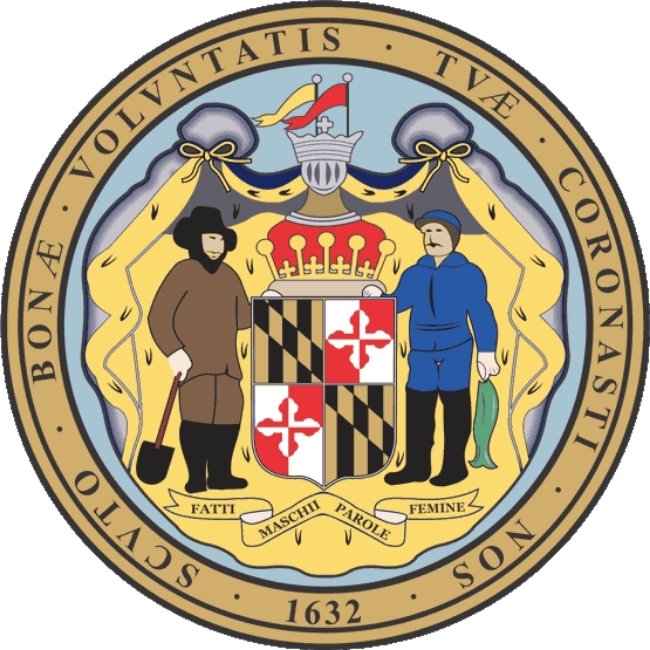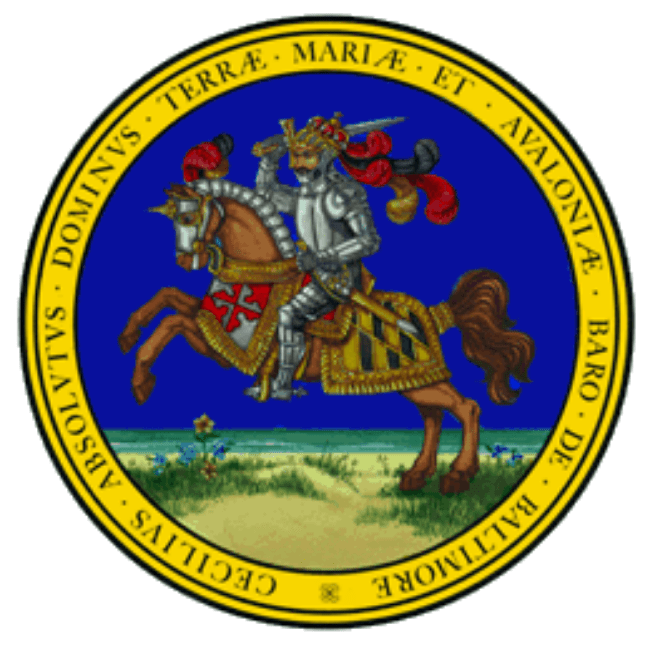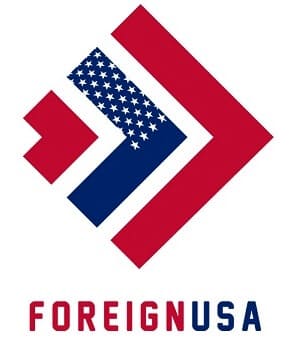Shortly after America’s independence in 1776, states like Maryland began to adopt their own official state seal, motto, nickname, and more, which are all used to symbolize and represent the uniqueness of each state and what they stand for.
So, what does the Maryland state seal represent? Maryland is one of the only U.S. states to have a double-sided state seal. However, only the reverse side of the Maryland state seal has been cut, and it is the side that is also used by the Governor and the Maryland Secretary of State to authorize Acts of the General Assembly and other official government purposes.
It is only the reverse side that you can see in the image below that is used officially as the state seal of Maryland. It was in 1959 that the obverse was described in statute and is still considered to be a part of the state seal. The original and first Maryland Great State Seal was brought over during the early stages of Maryland’s colony, however, it was stolen by Richard Ingle during the redellion led by him in 1645.
Excluding the period of time that was “crown rule” (1692-1715), the Great Seal continued to be used until the end of the 18th century! It was on February 5, 1794 when the new seal with republican imagery was adopted by the Governor and Council, and within that year, the General Assembly adopted a singular-sided Great Seal that showcases an eagle holding a shield. In 1854 another seal was authorized, which displayed an eagle and a version of the Calvert Arms.
It wasn’t until 1874 that Maryland readopted the reverse Calvert seal, which is the latest seal we associate with Maryland with today. The latest seal displays the newly corrected image of the Calvert Arms from the 1854 seal.

Great Seal of The State of Maryland
The image you can see displayed on the reverse side of the state seal are a plowman and fisherman either side of eachother, holding a shield with Maryland’s coat of arms. There is a Latin phrase that circles around the image, reading “Scuto bonæ voluntatis tuæ coronasti nos”, which translates to “With favor wilt thou compass us as with a shield.”
Additionally, you can also see Maryland’s state motto featured on the seal, “Fatti maschii, parole femine,” which can be loosely translated to “Manly deeds, womanly words”.
The reverse side of the state seal displays Lord Baltimore as a knight, fully armoured up and mounted on a charger. The inscription surrounding the seal is in Latin and translates to “Cecilius, Absolute Lord of Maryland and Avalon, Baron of Baltimore”.

Most states will have their seals showcase a relevant story, that is indicative of the state and its history, and the Old Line State puts its history and what it stands for across very well in its state seal.


